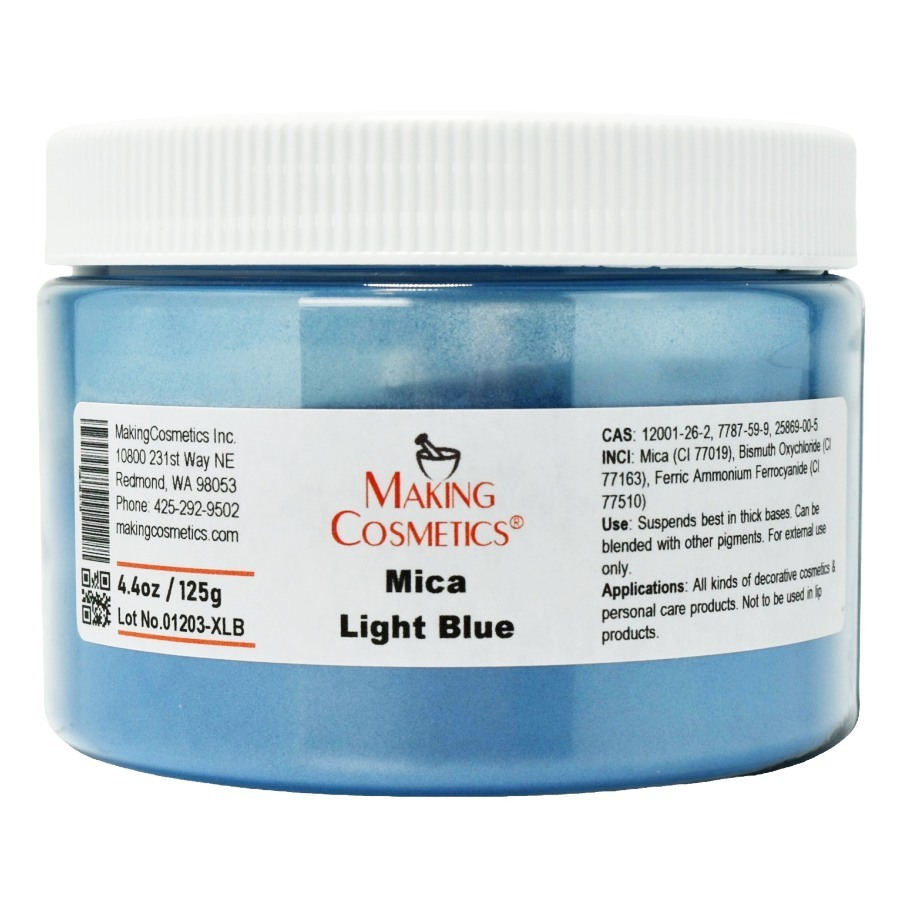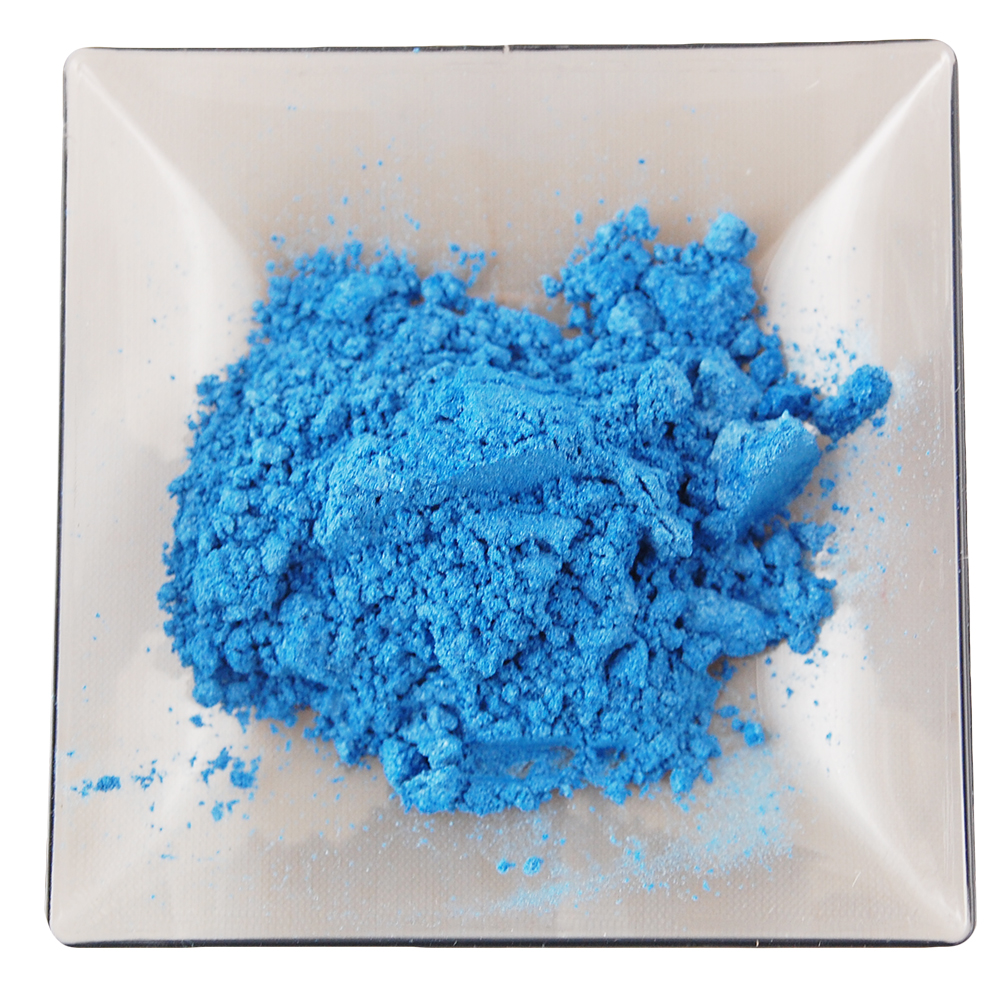Earn 200 Reward Points When You Create an Account
Mica Light Blue
Description
Description
Natural shimmer pigment derived from the mineral Muscovite mica coated with bismuth oxychloride, ferric ammonium ferrocyanide and calcium stearate. Medium particle size <15 micrometer. Permitted exempt color for cosmetic use.
Benefits
- Provides blue color shades with shimmering and glittering luminescence
- FDA permitted exempt color for cosmetic use
Use
Suspends best in thick bases. Can be blended with other pigments. For external use only.
Applications
All kinds of decorative cosmetics & personal care products. Not to be used in lip products.
Details
CAS
12001-26-2, 7787-59-9, 25869-00-5
INCI
Mica (CI 77019), Bismuth Oxychloride (CI 77163), Ferric Ammonium Ferrocyanide (CI 77510)
composition
Mica (CI 77019), Bismuth Oxychloride (CI 77163), Ferric Ammonium ferrocyanide (CI 77510), Calcium Stearate
Purity Grade
No purity grade applicable
Appearance
Light-blue shimmer powder
Solubility
Insoluble, but miscible in liquids (sinks to bottom in thin liquids)
Preservation
Preservative-free
Storage
Store light-protected at a cool and dry place
Country of Origin
USA
Raw Material Source
Natural mica (muscovite and/or phlogopite)
Manufacture
Natural micas are mined from granitic pegmatites and then coated with various pigments (e.g. iron oxides, titanium dioxide) to give them their specific color
Animal Testing
Not animal tested
GMO
GMO-free (does not contain plant-derived components)
Vegan
Does not contain animal-derived components
HS Code
2525200000
Regulatory Information
Mica Light Blue is a FDA-approved color additive but is exempt from batch certification. Micas are safe for use in coloring cosmetics generally, including cosmetics applied to the area of the eye, in amounts consistent with good manufacturing practice. Ferric Ammonium Ferrocyanide and Bismuth Oxychloride, which are contained in this mica, are safe for use in coloring externally applied cosmetics, including cosmetics applied to the area of the eye, in amounts consistent with good manufacturing practice.
Documents
You might also like

